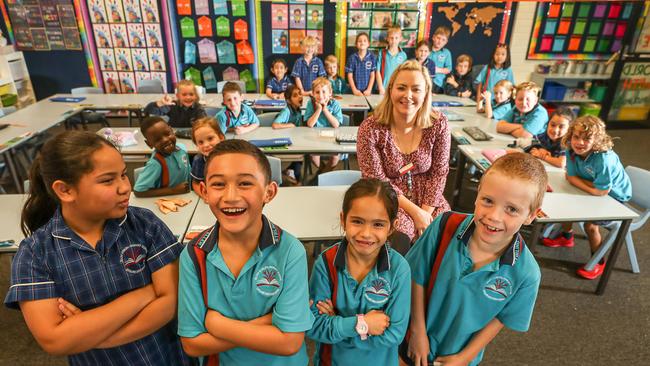National curriculum review: Phonics remains a sound practice for many
The explicit teaching of phonics has lifted student achievement and parents are happy with their children’s reading progress, the principal of a Perth-based public school says.

The explicit teaching of phonics has lifted student achievement and parents are happy with their children’s reading progress, the principal of a Perth-based public school says.
Despite an increasing number of schools switching to a systematic phonics-based approach to teaching reading, compelled by mounting evidence in its favour, Australia’s national curriculum authority has declared it will continue to support practices aligned with the prevailing whole-language and balanced literacy approaches
The principal of Ellen Stirling Primary School at Ellenbrook in Perth’s northeast, Dean Goldspink, introduced structured literacy, including explicit phonics teaching, in 2017 when NAPLAN results indicated students were not making expected academic progress. “Our school has been involved in a lot of professional learning to develop phonemic awareness, phonics, fluency, vocabulary and comprehension,” Dr Goldspink said.
“Our students thrive with this approach, and our teachers and their parents are very happy with student achievement and progress in literacy that continues to this day. Our teaching staff are always keen to be at the forefront of effective, evidence-based, high-impact teaching approaches.”
Phonics instruction teaches children to read by breaking down words into their individual sounds. They then learn how to blend sounds to make words. The approach is considered by researchers as the most effective way to teach children to read.
In contrast, whole-language and balanced literacy approaches try to teach children reading skills in the context of reading a book or a poem. This approach, used in classrooms for decades, encouraged whole word memorisation and the use of picture or meaning cues to guess unknown words. Phonics instruction is typically incidental.
States and territories are processing news that the revised national school curriculum will continue to support whole language practices for teaching reading, with NSW and South Australia the only states to explicitly preference phonics while the others continue to promote a balanced literacy.
NSW in March said it would dump predictable texts as preferred reading material for junior primary classrooms in favour of decodable texts that help to ensure children develop strong phonics skills.
SA implemented phonics screening checks with Year 1 students from 2019, which have shown year-on-year improvements. In 2018, 43 per cent of students demonstrated phonics skills at the benchmark level or higher, compared with 52 per cent in 2019 and 63 per cent in 2020.
SA Education Minister John Gardner said the state would continue to advocate for the use of phonics. “The SA government unambiguously supports the explicit teaching of phonics instruction as a critical part of foundational literacy development,” he said.
Queensland Education Minister Grace Grace noted the authority’s comments that the curriculum had a “strong focus” on teaching phonics and whole language structures, while West Australian Education Minister Sue Ellery said the state would continue to adapt the national curriculum to suit their “specific needs”.
Northern Territory Minister for Education Lauren Moss said she backed the revised curriculum, which enabled teachers to “tailor the delivery of teaching and learning to meet the needs of their students”.




To join the conversation, please log in. Don't have an account? Register
Join the conversation, you are commenting as Logout